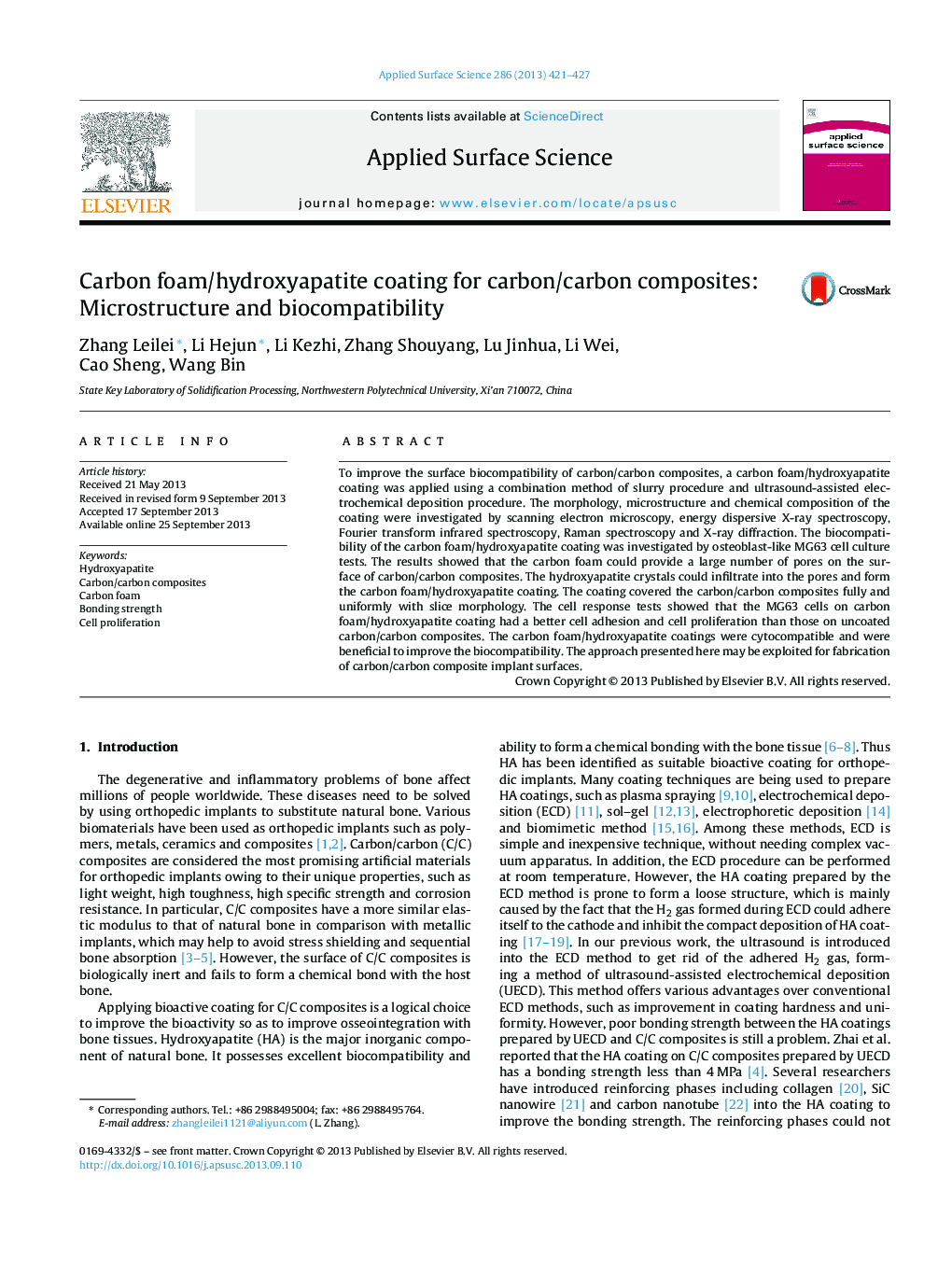| Article ID | Journal | Published Year | Pages | File Type |
|---|---|---|---|---|
| 5352127 | Applied Surface Science | 2013 | 7 Pages |
Abstract
To improve the surface biocompatibility of carbon/carbon composites, a carbon foam/hydroxyapatite coating was applied using a combination method of slurry procedure and ultrasound-assisted electrochemical deposition procedure. The morphology, microstructure and chemical composition of the coating were investigated by scanning electron microscopy, energy dispersive X-ray spectroscopy, Fourier transform infrared spectroscopy, Raman spectroscopy and X-ray diffraction. The biocompatibility of the carbon foam/hydroxyapatite coating was investigated by osteoblast-like MG63 cell culture tests. The results showed that the carbon foam could provide a large number of pores on the surface of carbon/carbon composites. The hydroxyapatite crystals could infiltrate into the pores and form the carbon foam/hydroxyapatite coating. The coating covered the carbon/carbon composites fully and uniformly with slice morphology. The cell response tests showed that the MG63 cells on carbon foam/hydroxyapatite coating had a better cell adhesion and cell proliferation than those on uncoated carbon/carbon composites. The carbon foam/hydroxyapatite coatings were cytocompatible and were beneficial to improve the biocompatibility. The approach presented here may be exploited for fabrication of carbon/carbon composite implant surfaces.
Related Topics
Physical Sciences and Engineering
Chemistry
Physical and Theoretical Chemistry
Authors
Zhang Leilei, Li Hejun, Li Kezhi, Zhang Shouyang, Lu Jinhua, Li Wei, Cao Sheng, Wang Bin,
